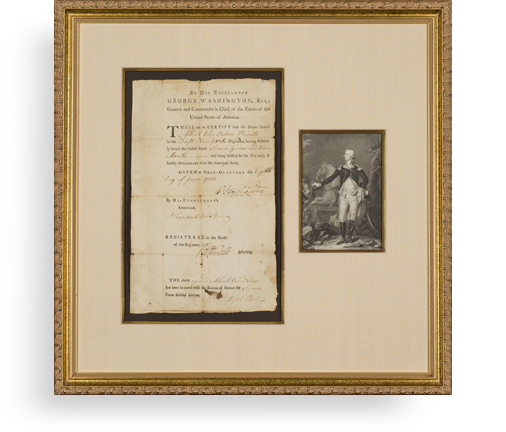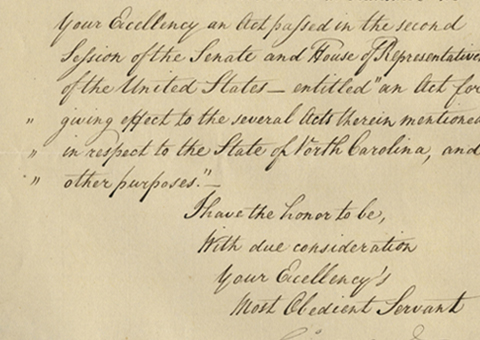Raoul Wallenberg Seeks to Save a Jewish Attorney in Budapest from the Holocaust

With the Liberation Card, Showing that Wallenberg's Efforts Saved his LIfe.
German forces occupied Hungary on March 19, 1944 and forced the Hungarian head of state, Miklos Horthy, to appoint a pro-German government under Dome Sztojay. The Sztojay government was prepared not only to continue the war as a German ally, but also to deport Hungarian Jews to German-occupied Poland. Shortly after...
German forces occupied Hungary on March 19, 1944 and forced the Hungarian head of state, Miklos Horthy, to appoint a pro-German government under Dome Sztojay. The Sztojay government was prepared not only to continue the war as a German ally, but also to deport Hungarian Jews to German-occupied Poland. Shortly after the occupation, Hungarian officials began to round up Hungarian Jews and to transfer them into German custody. By July, the Hungarians and the Germans deported nearly 440,000 Jews from Hungary, almost all of them to the Auschwitz, where the SS killed approximately 320,000 of them upon arrival and deployed the rest at forced labor in various concentration camps. Nearly 200,000 Jews remained in Budapest, however.
The Royal Swedish Embassy certifies that the Schutzpass in Dr Vámbéri László’s possession is a valid passport
In 1944, Franklin D. Roosevelt established the War Refugee Board (WRB), an organization whose task was to save European Jews from Nazi persecution. Its representative in Stockholm worked with Swedes to mount a rescue operation in Hungary. Among the participants was Raoul Wallenberg’s business partner, Kálmán Lauer, who suggested Wallenberg as a suitable candidate. Despite a complete lack of experience in diplomacy and clandestine operations, Wallenberg was assigned as first secretary to the Swedish legation in Hungary, arriving in Budapest on July 9, 1944. From this post, he would lead the most extensive and successful rescue effort during the Holocaust.
With authorization from the Swedish government, Wallenberg and his fellow Swedish diplomats issued “protective passports” (in German, Schutz-Passes), which identified the bearers as Swedish subjects awaiting repatriation and thus preventing their deportation. Although not technically legal, these documents looked official and were generally accepted by German and Hungarian authorities, who did not want to anger neutral Sweden and who sometimes were also bribed. The Swedish legation in Budapest also succeeded in negotiating with the Germans so that the bearers of the protective passes would be treated as Swedish citizens and be exempt from having to wear the yellow Star of David on their chests. With money raised by the WRB, Wallenberg set up hospitals, nurseries, and a soup kitchen; he also rented 32 buildings in Budapest and declared them to be extraterritorial, protected by diplomatic immunity. He put up signs such as “The Swedish Library” and “The Swedish Research Institute” on their doors and hung oversize Swedish flags on the front of the buildings to bolster the deception. These formed an “international ghetto” in Budapest that was reserved for those Jews and their families holding certificates of protection from a neutral country. Doing all this was an enormous task, and ultimately over 350 people were recruited to help Wallenberg carry it out.
After the Hungarian fascist Arrow Cross movement seized power with the help of the Germans on October 15, 1944, the Arrow Cross government resumed the deportation of Hungarian Jews, which Horthy had halted in July before the Budapest Jews could be deported. As Soviet troops had already cut off rail transport routes to Auschwitz, Hungarian authorities forced tens of thousands of Budapest Jews to march west to the Hungarian border with Austria. During the autumn of 1944, Wallenberg repeatedly, and often personally handed out certificates of protection, and intervened to aid those holding them, right from the columns of marching people, literally pulling many out of line, and saving as many as possible.
The name Vámbéri Lászlós appears on the list of Hungarian-Jewish attorneys in “Miscarriage of Justice: The Elimination of Jewish Attorneys in Hungary During the Holocaust.” He was one of those who received papers from Wallenberg. Document Signed on the letterhead of the Swedish embassy in Budapest, with its stamped seal, in Hungarian, October 22, 1944, stating:?“The Royal Swedish Embassy certifies that the Schutzpass in Dr Vámbéri László’s possession is a valid passport.” It is signed “R. Wallenberg” as Secretary of the Swedish Royal Embassy. This document thus dates from the confused and desperate days just a week after the Arrow Cross Party’s coup.
Was Wallenberg’s attempt to save Vámbéri László’s life successful? Provided with the Wallenberg document is an identification card issued to him on June 27, 1945, after the war in Europe was ended and when Budapest was under Soviet occupation. It gives the following information about him:
Name: Vámbéri László’s
Year and place of birth: 1901, Budapest
Mother’s name: Barna Jolán
Occupation: lawyer
Residence: Budapest, 8th district, Jozsef korut 37-39
Place and date: Budapest, 27.6.1945
Hungarian Police Budapest Headquarters
So yes, he was saved by Wallenberg. Yad Vashem, Israel’s National Authority for the Remembrance of the Martyrs and Heroes of the Holocaust, states that Wallenberg “saved the lives of tens of thousands of Jews in Budapest during World War II…and put some 15,000 Jews into 32 safe houses.” The Talmud has a teaching that a person that saves one life has the same merit as if he’d saved the whole world. What then of Wallenberg, who saved tens of thousands?
Wallenberg’s relationship with the U.S.-sponsored WRB proved fatal to him. When the Russians arrived in Budapest in January 1945, they arrested him on suspicion of being a spy for the United States. He died in Soviet captivity, though nobody knows when or under what circumstances. In 1981, Wallenberg became an honorary citizen of the United States, which puts him in rare company. The only others to receive this honor have been Winston Churchill, the Marquis de Lafayette, William Penn and his wife, General Pulaski of the Revolution and Mother Teresa.
Interestingly, the schutz-passes themselves were usually signed by embassy officials rather than Wallenberg, although we have seen his name or initials added to some. His own signature was generally affixed to letters like this one certifying that the schutz-pass the bearer carried was legitimate. But in any case, his autograph on a Holocaust-related document is very rare, this being just the second we have had in our decades in business. A search of auction records for the last 35 years reveals none at all.

Frame, Display, Preserve
Each frame is custom constructed, using only proper museum archival materials. This includes:The finest frames, tailored to match the document you have chosen. These can period style, antiqued, gilded, wood, etc. Fabric mats, including silk and satin, as well as museum mat board with hand painted bevels. Attachment of the document to the matting to ensure its protection. This "hinging" is done according to archival standards. Protective "glass," or Tru Vue Optium Acrylic glazing, which is shatter resistant, 99% UV protective, and anti-reflective. You benefit from our decades of experience in designing and creating beautiful, compelling, and protective framed historical documents.
Learn more about our Framing Services











































































































